
Whenever I go to Vietnam, I’m always surprised by how much better the ga xe phay (chicken salad) tastes there than in the US or when I make it at home. Last year, a dear family friend took us to a street stall near her home, where the vendor not only makes a really great ga xe phay, but also uses the chicken stock to make chicken congee and chicken noodle soup, so you get a full meal all centered around the chicken. It was so simple but so good!

 In trying to pin down what made that meal so good, I’ve decided it comes down to these: (1) the cabbage is very finely shredded, so that the salad is light, not too chunky; (2) there is a generous use of Vietnamese coriander (rau ram), which lends that distinctive taste to Vietnamese chicken salad; and (3) last and perhaps most important: in Vietnam they will often include the whole chicken in the salad — bones, skin, and all.
In trying to pin down what made that meal so good, I’ve decided it comes down to these: (1) the cabbage is very finely shredded, so that the salad is light, not too chunky; (2) there is a generous use of Vietnamese coriander (rau ram), which lends that distinctive taste to Vietnamese chicken salad; and (3) last and perhaps most important: in Vietnam they will often include the whole chicken in the salad — bones, skin, and all.
That last tidbit is what I hadn’t really noticed before. In the US, I’m so used to chunks of skinless, boneless chicken in everything, and that’s typically how even my family makes ga xe phay at home. Not everyone likes to eat meat on the bone (my husband, for one — it’s too much work and too little payoff from his point of view), but my thought is that if you take great enjoyment in the sheer act of eating, then meat on the bone makes perfect sense. I think of gnawing on bones as savoring every last morsel for as long as possible, with the added benefit that you’re not exactly taking in extra calories in doing so. :) Nowadays it seems people can understand the idea that the bones are where the flavor’s at. The only other American equivalent I can think of is eating a drumstick, which seems to unequivocally convey the joy of eating across cultures — it’s hard to imagine a drumstick tasting quite so good without the bone, right? (As for the deboned chicken wing, I don’t think I’ll ever figure that one out.)
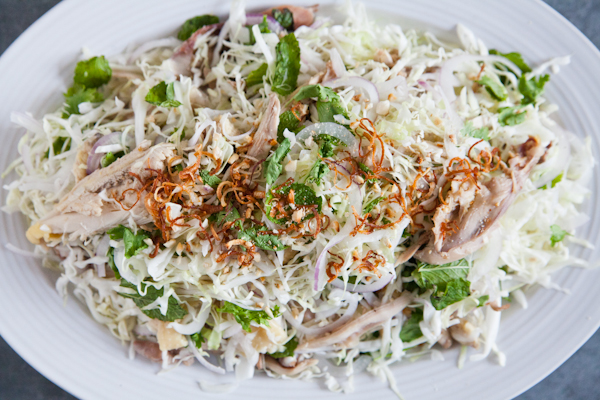
I’ve written about ga xe phay here before, but I just couldn’t resist doing a second post on it with this new (to me) detail. Because if you’re tucking into a chicken salad that includes all your favorite parts of the chicken… well, that makes it an entirely different type of salad. In that first post, I mentioned our family likes to make this dish for potlucks and parties, and we serve it on top of large shrimp chips. By comparison, this version here is more homey in style, because it would be a little tougher to serve, say, a chicken wing on a shrimp chip… but if you really wanted to, don’t let me stop you. :)
Accompanying the salad is noodle soup or congee, but instead of being the star of the meal, they are more like the starch component to round out the meal, though they are also perfectly delicious on their own. The meal is totally flexible, and at the street stall, they had a few types of noodles you could have in your soup. One of them was banh pho noodles, and you can indeed even turn the resulting chicken stock here into chicken pho simply by adding a few extra ingredients to the broth. I’ve also seen Vietnamese restaurants offer a duck version of the shredded cabbage salad to accompany bun mung vit (duck and bamboo noodle soup), so substituting duck is also a fine possibility here.
If meat on the bone is not your thing, you can simply throw those bones back into the stock after you shred the poached chicken, so that the bones can lend more flavor to the broth (or you could keep the drumsticks and wings intact but throw the rest of the carcass back into the pot). If you do choose to keep all the meat on the bone, then you’ll probably want to add an extra pound of chicken bones into the stock to get more flavor into the liquid (or, alternatively, poach the chicken in chicken stock to begin with), as I’ve noted in the recipe.
In the end, it’s really hard to say which is the best part of this meal… the salad, all my favorite bits of chicken, or the chicken-broth-infused noodles and congee. That’s why I just had to make them all here. :)
Ga Xe Phay (Vietnamese Chicken Salad)
Serves 4 as a side dish
Because the chicken forms the basis of the meal here, you definitely want to get the best chicken you can find. Organic, free-range is best. In Vietnam and much of Asia, the chickens tend to be “free-roaming” and are scrawnier, with denser meat, and more chicken flavor. The second important thing is that it’s really best to use Vietnamese coriander here, which is traditional to this dish. But if you can’t find it (as I could not in Beijing) or don’t like the flavor of it, then mint will suffice.

a 2- to 3-lb organic, free-range chicken, including organs if you like
coarse salt for scrubbing (optional)
1 tsp table salt (optional)
2 scallions, cut into 2-inch pieces
1-inch piece ginger, sliced
1 lb chicken bones (back, neck, wings, etc.)Â (alternatively, you can use the bones of the poached chicken after it’s shredded if you don’t intend to keep the meat on the bone; or if you don’t add any extra bones at all, you could use chicken stock instead of the water listed next)
2 quarts water, or just enough for the chicken to be submerged
1/2 head of cabbage
1 medium-size red onion
1/2 cup packed Vietnamese coriander (mint is an acceptable substitute), leaves plucked off
1/2 cup packed cilantro, torn into small pieces
fish sauce dressing (see below)
1/4 cup fried shallots (homemade recommended, but store-bought will suffice in a pinch)
2 Tbsp crushed roasted peanuts
Fish Sauce Dressing (nuoc mam cham)
1 clove garlic
1 Thai bird chili
4 Tbsp raw cane sugar
4 Tbsp lime juice or vinegar
4 Tbsp fish sauce
1 cup water
1. Clean the chicken and discard any excess fat. If you wish, you can give the chicken an exfoliating salt scrub to get the skin nice and smooth. :) This step is totally optional, but I love the skin so I make the effort. If you do it, make sure to rinse the salt off afterward. Pat the chicken dry. Next, marinate the entire chicken with 1 teaspoon of salt, both inside the cavity, under the skin, and over the skin. This step is also optional, as the chicken will be eaten with a dressing or sauce in the end anyway, so not a lot of salt is needed here, but I like to have the flavor permeate the meat a little better, so I do like to marinate it for at least an hour and up to overnight. Put the pieces of scallion and ginger in the cavity. If you do let the chicken marinate overnight, take it out of the fridge about an hour before you start cooking to let it come closer to room temperature again.
2. In a stockpot pot large enough to hold the chicken, heat about 2 quarts of water, or just enough water to cover the chicken (but don’t put the chicken in yet). (If you’re not planning to add any extra bones later on, then you’ll want to start out with chicken broth as the poaching liquid here.) When the water boils, slide the chicken gently in. You can have some extra hot water at the ready in case you need to add more to fully submerge the chicken. If you end up with too much water, scoop some out so that the broth doesn’t end up too thin and diluted. You can also add the organs now, if you want to eat those as well. Let the water come back up to boiling, and then cover the pot with a lid. Turn off the stove, and let the chicken poach in the residual heat of the covered pot.
3. After 45-50 minutes, the chicken should be just done. It can take a few trials to get the hang of the timing, and it depends on the size of the chicken. I like my chicken just barely done, with the barest hint of pinkness still left, so for a small bird of around 2 pounds, I would tend to take it out around 40 minutes. And since we’re shredding the chicken in this recipe, there isn’t any pressure to keep the chicken intact or looking nice, so it’s easy just to throw any underdone pieces back into the pot for a little longer. But if you definitely want your chicken to be fully done with no pinkness, then go by the longer time period.
4. A few minutes before taking the chicken out, prepare an ice bath large enough for the chicken to be submerged. Gently lift the chicken out of the stock, drain any juices back into the pot, and plunge the entire chicken into the ice bath. You can turn the chicken a couple times to make sure each part gets covered by the ice water. This step helps to stop the cooking and, most importantly, it firms up the chicken, giving the meat a nice, tight springiness and making the skin crisp.
5. Once the chicken has cooled enough to touch, tear it into pieces with your hands. If there are any bones you don’t plan to eat, take the meat off those parts and toss the bones back into the broth to simmer longer. If you intend to keep all of the bones, then you’ll want to add about a pound of chicken bones into the broth, and let the broth simmer for about another hour. Set the shredded chicken aside as you prepare the salad.
6. To prepare the salad, cut the cabbage into the finest shreds that you can manage. It should feel as light and satisfying as running your fingers through shredded paper packaging. Slice the onion as paper-thin as possible, then soak it for a few minutes in cold water to take some sting out of the raw onion. Drain well. You can give the onion a gentle squeeze to get the excess water out, so that it doesn’t dilute your dressing later on. Set cabbage and onion aside.

7. To make the dressing, pound garlic, chili, and sugar into a paste with a mortar and pestle (the sugar helps create friction as you pound). You can also just mince the garlic and chili with a knife, but I recommend pounding to release all the juices and flavor. Add lime juice or vinegar, and scrape the sides of the mortar to release the paste. Pour all this into a bowl or jar, add the fish sauce and water, and mix. Set aside until ready to serve.
8. Once all the components of the meal have been prepared (including the noodle soup or congee), and just before you’re ready to serve, gently toss together the cabbage, onion, whole coriander leaves, torn cilantro, half of the shredded chicken (reserving the other half of the chicken for the noodle soup or congee), and about 1/3 to 1/2 cup of the fish sauce dressing. Add the dressing incrementally to taste, and adjust as you go along — feel free to be generous here; it’s ok if the dressing ends up pooling at the bottom of the plate. Arrange the salad on a large plate, then top it with fried shallots and crushed roasted peanuts. Serve immediately, while the shallots are still crispy.
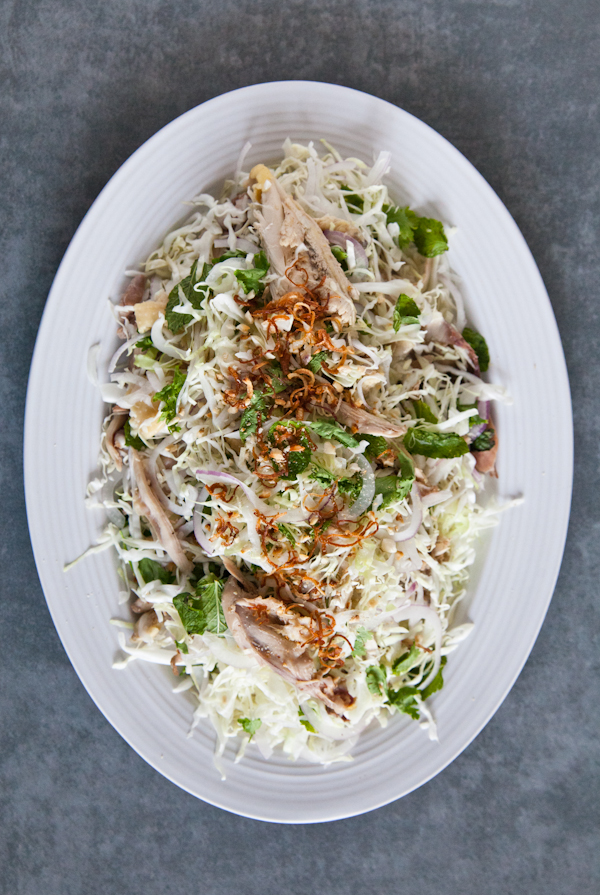
With the approximately 8 cups of chicken broth obtained from poaching the chicken, you can either make chicken congee or chicken glass noodle soup. The recipes below involve using the entire 8 cups of broth — so you could choose to make either recipe as written, or split these recipes in half and make both congee and noodle soup with 4 cups of broth each (as I did in the photos). If you happen to have extra chicken broth on hand, you could make both in their entirety. If you’re looking for ease, congee is essentially made by letting rice boil in broth for about an hour, resulting in a warm, homey bowl of savory rice porridge, with the essence of chicken in every bite. If you want something a bit heartier, then the few extra steps involved in the noodle soup are worth it.Â
Chao Ga (Chicken Congee)
Serves 4
2/3 cup jasmine rice (using standard measuring cup, not the plastic cup that comes with the rice cooker)
8 cups chicken broth, strained
1/2 tsp table salt
1/2 poached chicken, torn
For garnish:
2 scallions, thinly sliced
1 bunch cilantro (about 6 stalks), chopped
fried shallots and shallot oil
lime wedges
Thai bird chilies
1. Rinse the rice in water and drain. Repeat 2 more times or until any specks of dirt have been removed and the water runs relatively clear.
2. In a large saucepan or small pot, add the rice, the 8 cups of broth (strained of any stray pieces of chicken or leftover ginger and scallions), and the salt. Let the liquid come to a boil and turn the heat down to low. Keep the liquid at a gentle simmer for about an hour, stirring frequently as the rice gradually absorbs the liquid and the resulting congee grows thicker. How thick or thin you like the congee is a matter of preference. You can add more liquid to thin this out or cook it longer to make it more concentrated. Adjust seasoning at the end, adding more salt (or fish sauce) as needed.
3. Serve the congee in bowls, adding in pieces of the other half of the shredded chicken reserved earlier. Garnish as desired with scallions, cilantro, fried shallots, and shallot oil, and serve with lime and chilies on the side.

Mien Ga (Chicken Glass Noodle Soup)
Serves 4
If you want to make this even simpler, you can omit the charred onion, ginger, coriander, and lemongrass. You’ll still end up with a flavorful chicken noodle soup that is just as good in its simplicity. Other types of noodles will work with this dish, but you’ll want to boil the noodles in a separate pot of water to avoid the starch clouding up the broth. Only with bean thread (or glass) noodles will it work in your favor to cook directly in the broth, so that the noodles can absorb the flavor.
8 cups chicken broth
1/4 tsp table salt
1 Tbsp fish sauce
half onion, charred
1-inch ginger, charred
1 tsp coriander seed
1 lemongrass, bruised
6 oz. dried bean thread noodles
1/2 poached chicken, torn
For garnish:
2 scallions, thinly sliced
1 bunch cilantro (about 6 stalks), chopped
thinly sliced white onion
fried shallots and shallot oil
lime wedges
Thai bird chilies
Vietnamese coriander

1. Boil the broth with the salt, fish sauce, charred onion and ginger, lemongrass, and coriander (keep the coriander seeds tied in cheesecloth or inside a metal ball for simmering spices for easy removal later; otherwise you’ll have to strain the broth). Simmer together gently for 30-60 minutes. Remove the aromatics and the coriander seeds. Taste the broth and make any adjustments to seasoning accordingly.
2. Soak the bean thread noodles in hot (near boiling) water for 5 minutes. Drain and cook the noodles directly in the broth for 2-3 minutes or until al dente. If desired, you can cook in batches with a mesh strainer. Drain the noodles, allowing the broth to fall back into the pot, and divide the noodles into individual deep soup bowls. Let the noodles sit dry in the bowls until ready to serve. (If you don’t plan on serving right away, then you may need to briefly reheat the noodles in the boiling broth, using a mesh strainer, just before serving to loosen them up.)
3. When ready to serve, heat the broth back up to boiling. Divide the reserved half of the shredded chicken among the bowls of noodles. Garnish the bowls with scallions, cilantro, sliced onion, and fried shallots. Pour hot broth into each bowl of noodles. Drizzle shallot oil over the broth. Serve with wedges of lime and chili pepper on the side.


Ginger Fish Sauce Dipping Sauce
(Not pictured.) Optional dipping sauce for the chicken, to serve alongside the congee and noodle soup.
2 Tbsp grated ginger
1/3 cup fish sauce dressing (from ga xe phay recipe above)
Divide grated ginger onto small dipping plates. Pour fish sauce dressing over the ginger. Serve on the side with the congee and noodle soup for dipping the chicken.


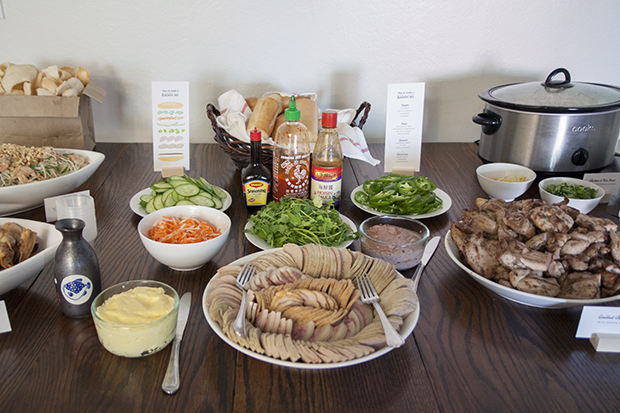


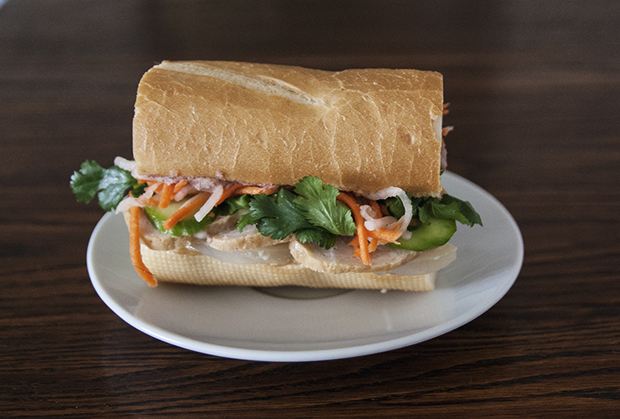
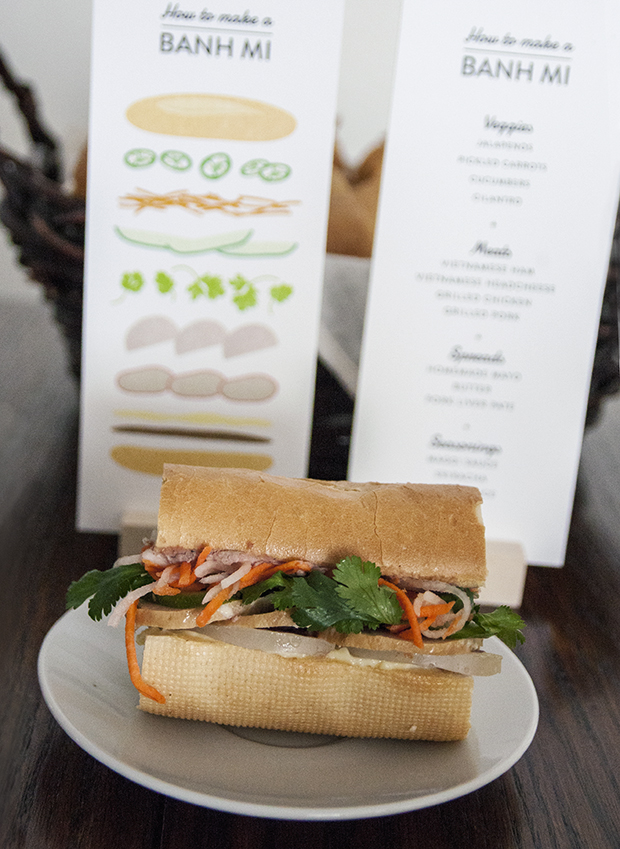
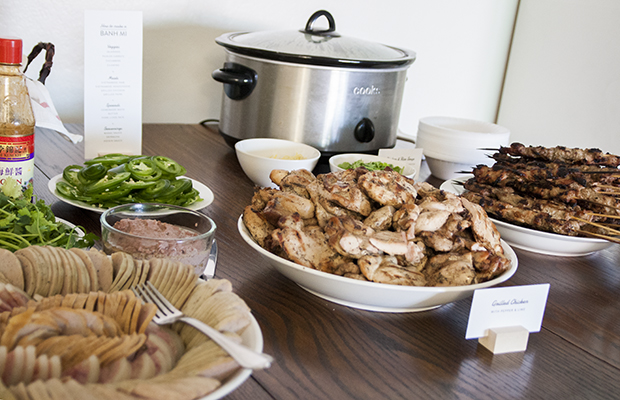
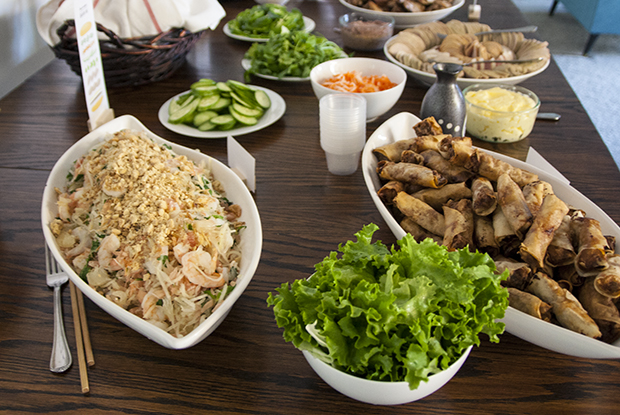
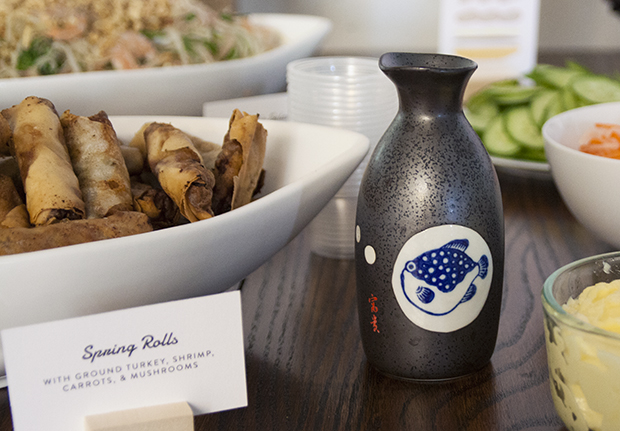


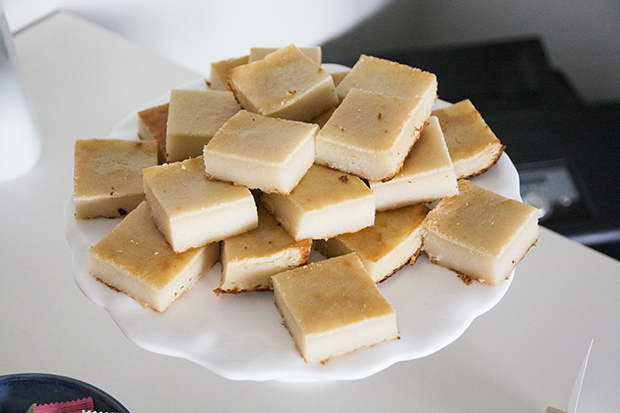
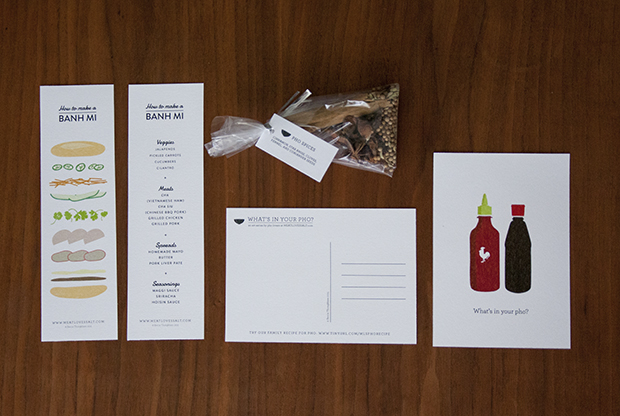
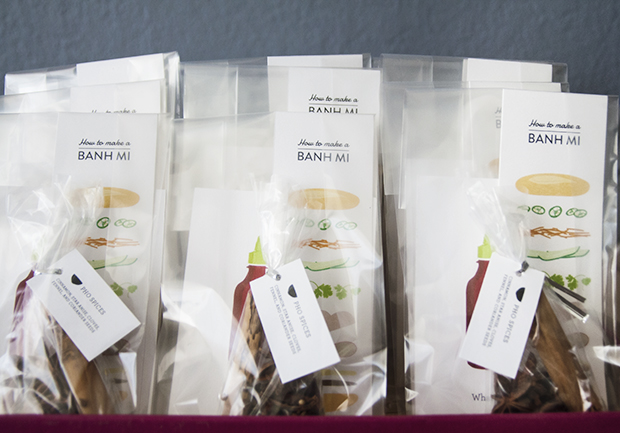









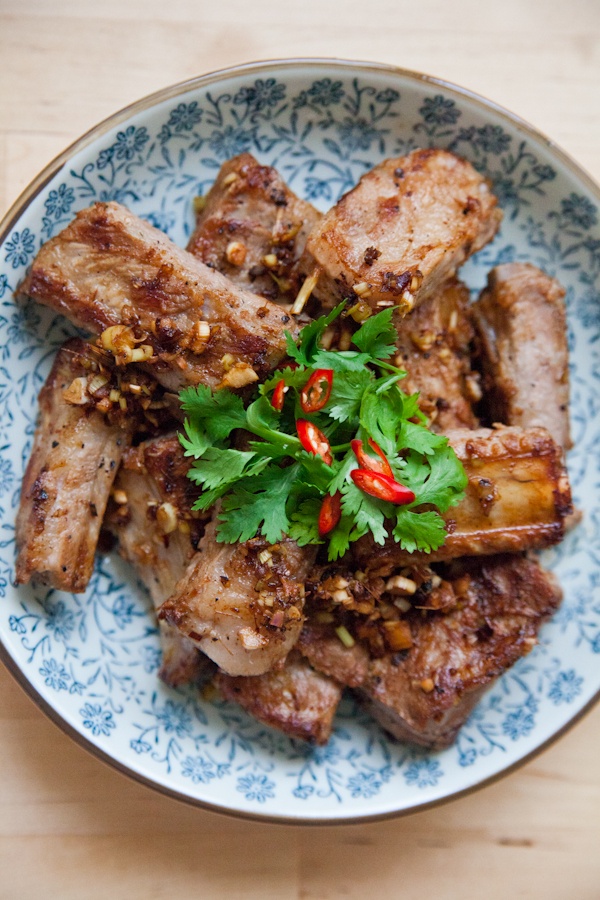



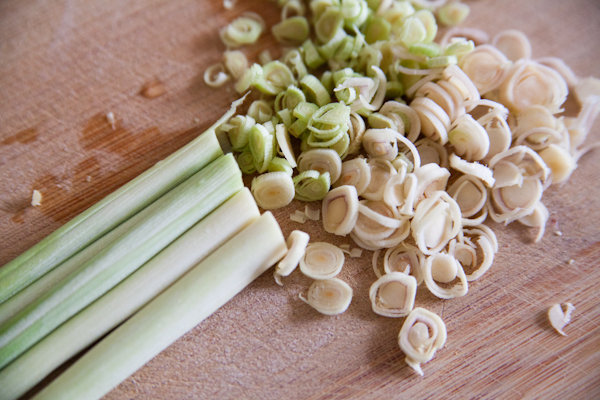
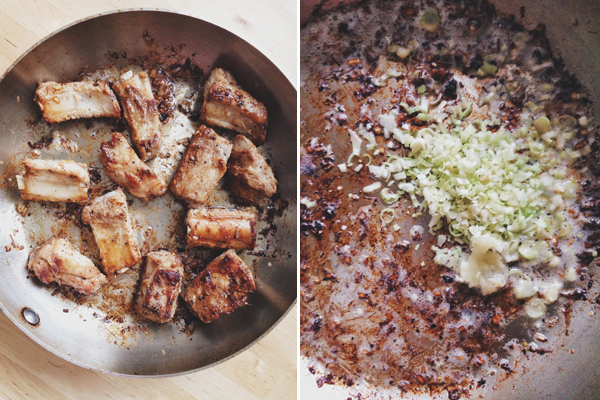
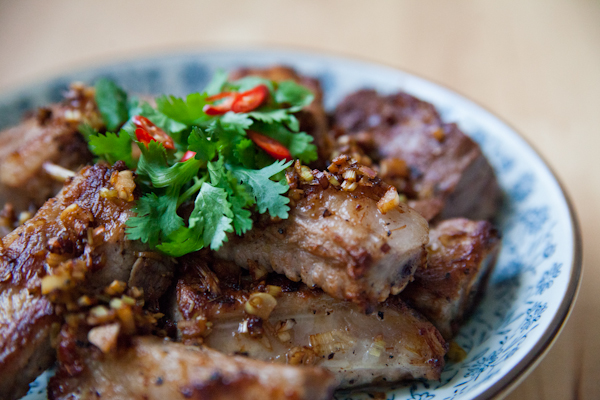






















Connect with us